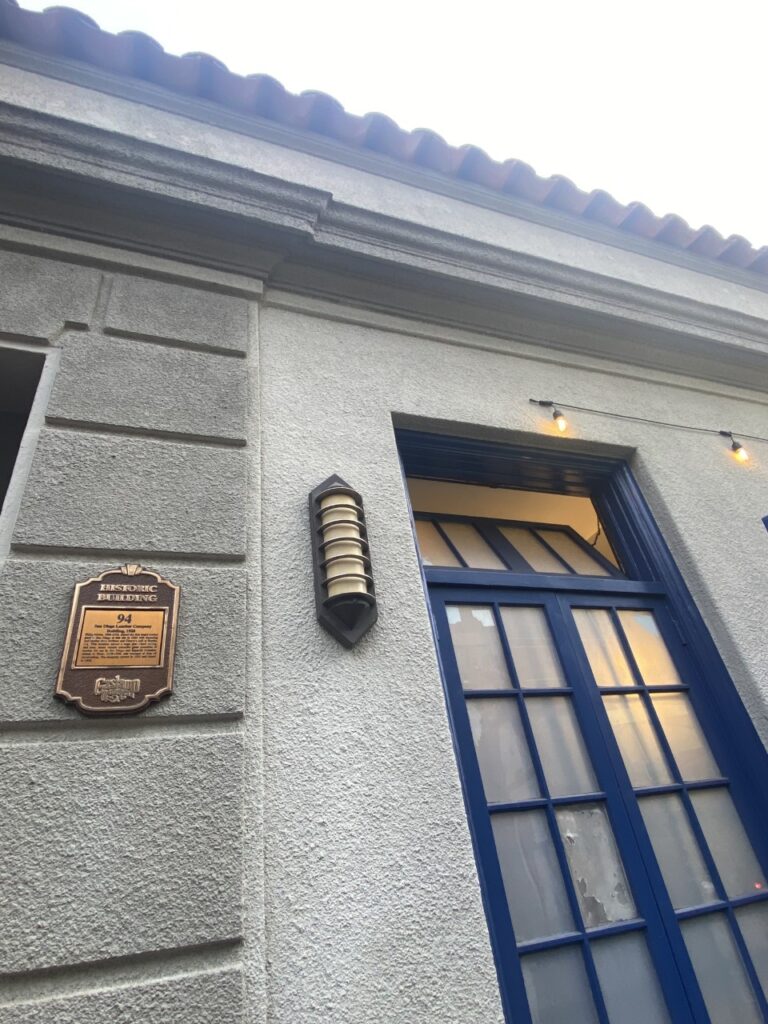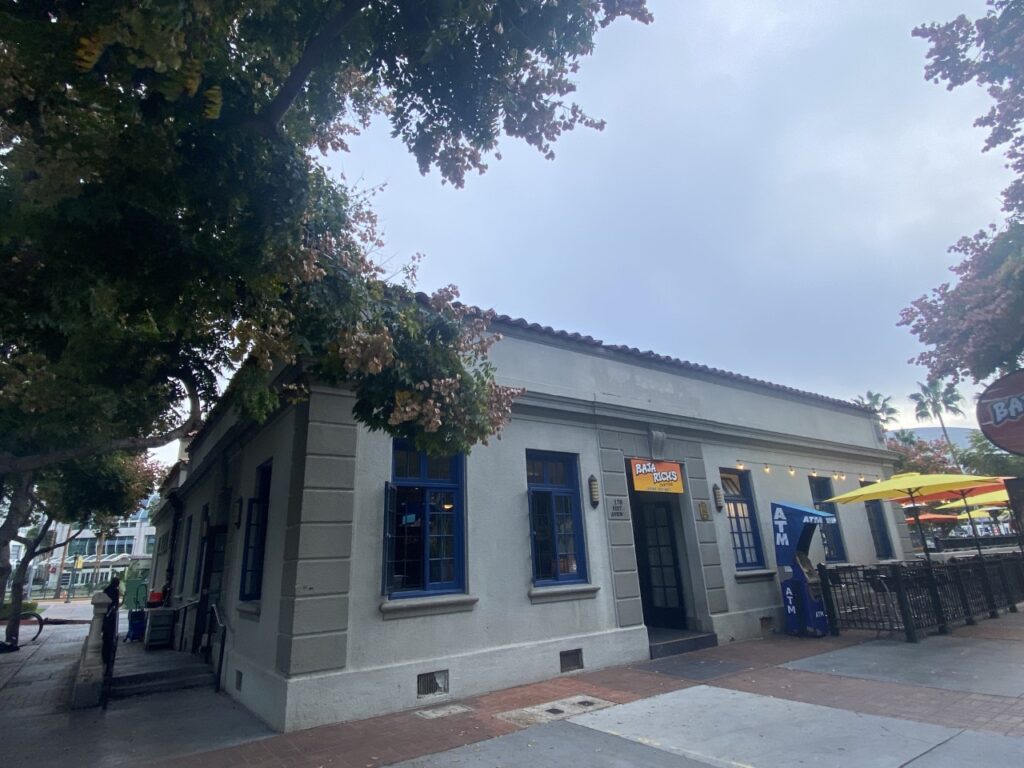Landmarks
Building a New Town….
San Diego Lumber Company Building
1926
170 Sixth Avenue
Architect: Unknown
Architectural Style: Commercial/Spanish Revival
The San Diego Lumber Company had a somewhat tumultuous beginning. On July 19,1872, Alonzo Horton transferred the title of the site to G.W.B. McDonald and W.B. Holcomb, who were previous owners of a lumber company known as McDonald and Company.
During the period between 1871 and 1897, many disputes arose as to the ownership and rights of use of tidelands and the creation of “new landfill estates” in the San Diego Bay. Industries in the area had been filling in land and thus extending their properties for private use. This, of course, resulted in many court actions. Nonetheless, in late 1872, McDonald petitioned the City for rights to build a wharf at the foot of Sixth Street, and by February of 1873, preparation for excavations were begun to begin construction of a new lumber office. By April 6, 1873, they were prepared to open the location, which adjoined the Pacific Mail and Steamship Company’s wharf. In 1881, McDonald reported the extension of the existing wharf railroad to his lumber yard. The following year, McDonald also installed a railroad turntable and track. This enabled him to to bring lumber into the yard dry, rather than the wet and sandy condition caused by bringing the wood ashore via rafts.
In 1883, McDonald took in a new partner, Philip Morse, and the new company became known as McDonald and Morse. Later in the year, they enlarged their capabilities by leasing several lots north of their lumber yard and extending it from 6th to 5th street. With Morse’s financing, the company also planned to place a railroad track directly from the wharf through the new addition. This necessitated filling in part of the property. By 1884, the side tracks to the lumber yard were completed, and the company, which originally only dealt in redwood, was now able to also offer all types of lumber, doors, windows, building materials, fencing lath, shakes and shingles. It had become the largest in southern California. In May of 1884, the company, calling itself the San Diego Lumber Company, filed Articles of Incorporation and stated their net worth as $100,000. The new company’s directors were Jacob Gruendike, brothers R.A. Thomas and J.R. Thomas , with McDonald and Morse also remaining as directors.
In 1885, a new, 70 foot wide wharf was constructed enabling trucks/wagons to travel down its center. The company also enlarged its office and purchased a new walk-in safe, which was so large that the front door had to be widened to permit its installation. The company remained at this site until 1955. It finally closed its doors in 1968.
The current building was constructed for the San Diego Lumber Company in 1926. It is often referred to as the Frost Building, as Albert A. Frost was the manager of the lumber company at the time it was built. It has also been dubbed the LeBaron Distributing building, due to that company’s later use of the property. Le Baron’s dissolved in 1986. In the mid-1990s, the property was even used as visitor information center for the Gaslamp area. Following its incarnation as an international visitor’s center, the site was the home of the Tin Fish restaurant and Hepburn’s bar for nearly 20 years.
The structure itself is a single story, Spanish Revival style building of brick and stucco. The roof, composed of red Spanish tiles, is mansard style, and the foundation is concrete. The corners of the building have quoins (concrete blocks at the corner of a wall), in this case used to add interest and imply strength to a relatively plain façade. The entrances are slightly off-center and are framed around the edges with the same quoin motif. Arguably the most interesting feature of the building are the 20-paned, casement style windows, which are wood framed and evenly spaced across the front of the structure. Two are placed on the south side of the entrance and three are placed on the north side. The same asymmetrical pattern is repeated on the other facades of the building.

The current occupant of this enduring building is Baja Rick’s Cantina. The owner , Rick DiRienzo, inspired by the Puerto Nuevo fishing village in Mexico, has created a varied menu featuring Mexican-inspired appetizers, tacos, burritos, seafood platters and entrees. The careful renovation of the building has artfully maintained its historical integrity, while creating a relaxed and festive outdoorsy atmosphere.
Built to last, the interior bar, once the office, is both historical, cozy and inviting.

